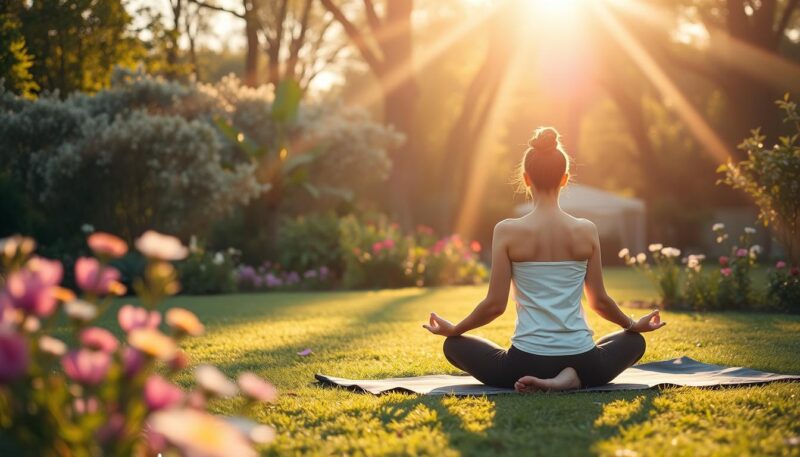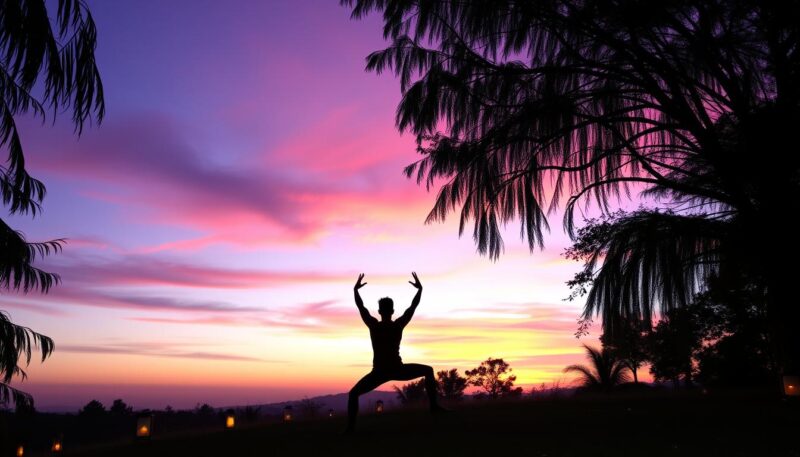Determining the best time to do yoga can often feel like a personal journey because it varies significantly based on individual lifestyles, energy levels, and preferences. For many, the question of when to practice yoga brings up a plethora of considerations, from morning’s tranquility to evening’s iconic calm. The core of your yoga practice lies not just in the timing but in establishing a consistent routine that complements your daily life. Practicing yoga regularly can harness its benefits over time, helping you cultivate both physical vitality and mental clarity. Each moment of the day carries its unique energy, and learning to navigate these can enhance your yoga timing strategy.
In the community around yoga, the morning sessions are often touted as the most energizing, particularly within traditions like Ashtanga, where practitioners are encouraged to start their day before sunrise. This practice is believed to not only help you kickstart your day with vigor but also to create a structured schedule that may yield numerous physical and mental benefits. Others may find solace in the serene nature of evening sessions, perfect for easing the stress accumulated throughout the day. Each time slot holds different advantages and effects, making it essential to experiment and discover what resonates with you the most.
Ultimately, your ideal yoga practice schedule may involve blending different times throughout the week, allowing flexibility based on your changing demands. In the following sections, we will dive deeper into the advantages of morning and evening yoga while considering factors that might influence your practice timing. Together, we will aid you in your quest to identify the perfect moment for your yoga routine.
Understanding Your Personal Preference for Yoga Timing
Identifying your personal yoga timing can significantly enhance your experience and promote the benefits of early yoga. Establishing a routine that resonates with your lifestyle ensures practice consistency and creates space for yoga’s positive effects in your life. Finding the optimal time for yoga includes assessing personal energy levels and how your body responds at different times of the day.
The Importance of Consistency in Your Practice
To truly unlock the full benefits of yoga, consistency in your practice is vital. Engaging in yoga sessions regularly solidifies habits and enhances your connection to the practice. Beginners should aim for two sessions each week, gradually increasing frequency as comfort and familiarity grow. Committing to a minimum of 60-100 minutes of yoga each week can establish a solid foundation for progress and transformation.
Factors Influencing Your Optimal Practice Time
Your optimal practice time may vary due to various factors, including daily schedules, commitments, and personal preferences. Consider testing different time slots throughout the week to see when your body feels most receptive. Morning routines can set a positive tone for the day, while afternoon practices can energize and revitalize. Evening sessions offer relaxation, making them an excellent choice for unwinding after a busy day.
Alignment with Your Body’s Natural Rhythms
Aligning your yoga practice with your body’s natural rhythms can lead to a more fulfilling experience. Morning yoga can infuse your day with energy, while evening sessions may promote better sleep and stress relief. Pay attention to how you feel during and after your practice at different times. Each session should cater to your unique rhythms and signals, allowing you to find a personal routine that prioritizes well-being.
The Benefits of Morning Yoga Practice
Starting your day with a morning yoga routine offers a variety of benefits that can significantly enhance your day-to-day life. By engaging in yoga early, you can experience a boost in energy and clarity, setting a positive tone for whatever challenges lie ahead.
Morning Yoga for Energy and Clarity
The benefits of early yoga are profound. Research shows that practicing yoga in the morning can lead to a surge of energy that surpasses other times of the day. Whether you choose a session lasting 25 to 40 minutes or even a compact 7-minute routine, you will find that incorporating yoga can help improve mental focus and clarity. This foundational practice prepares you to tackle your daily tasks with a renewed sense of purpose.
Tenets of Traditional Practices: Brahma Muhurta
According to traditional yoga texts, the concept of brahma muhurta emphasizes practicing yoga during the hours of 4:00 am to 6:00 am. This period is regarded as the most auspicious for spiritual growth and physical well-being. Engaging in yoga during these early hours aligns with the body’s natural rhythms, promoting improved metabolism, enhanced digestion, and overall vitality.
Common Morning Yoga Routines to Consider
Creating an energizing morning practice can take many forms. Various online channels offer free yoga classes tailored to your preferences, from gentle Hatha to dynamic vinyasa flow. Here’s a simple structure for a morning routine you might consider:
| Time (Minutes) | Activity | Benefits |
|---|---|---|
| 5 | Sun Salutations | Wakes up the body, warms muscles |
| 10 | Twists | Improves spinal flexibility, enhances digestion |
| 10 | Backbends | Increases energy, opens the heart |
| 5 | Meditation or Breathwork | Promotes mental clarity, centers your thoughts |

Incorporating a morning yoga routine contributes to regulating sleep patterns and creates a sense of accomplishment that helps eliminate the pressure of trying to exercise later in the day. Many practitioners have seen significant improvements in anxiety and insomnia through consistent early morning practice, reaffirming the transformative potential of these energizing rituals.
Best Time to Do Yoga – Evening or Nighttime Sessions
Evening yoga offers an ideal opportunity to unwind and release the stress accumulated throughout the day. Adopting a nighttime yoga routine allows you to transition peacefully from a hectic day into a calm and restful night. As you engage in evening yoga, you’ll find that it helps set the tone for relaxation, paving the way for a better night’s sleep.
Evening Yoga as a Relaxation Method
Integrating evening yoga into your routine can significantly enhance your relaxation methods. This practice focuses on gentle, restorative poses that promote tranquility. As you stretch and breathe deeply, you might notice a reduction in tension and anxiety. These calming movements help clear the mind, creating a space for tranquility before bedtime.
How Evening Practices Help with Stress Relief
Practicing stress relief yoga in the evening serves as a powerful tool to manage daily stressors. Engaging in relaxing yoga poses can lower cortisol levels and increase your overall sense of well-being. This dedicated time allows you to disconnect from the challenges of the day, moving forward without the weight of stress as you prepare for sleep.
Recommended Evening Poses for Better Sleep
To achieve the best benefits from your nighttime yoga routine, consider incorporating these gentle poses into your practice:
- Child’s Pose
- Legs Up the Wall
- Seated Forward Bend
- Cobra Pose
- Reclined Bound Angle Pose
Each of these poses supports relaxation and can significantly contribute to achieving yoga for better sleep. Consistent evening yoga practices enable you to cultivate a soothing nighttime ritual, ultimately leading to improved sleep quality and a more rejuvenated morning.

Conclusion
The journey to find your yoga time is a personal exploration that reflects your unique lifestyle and physical needs. Whether you prefer morning yoga or evening sessions, the most important aspect is establishing a consistent yoga practice schedule that aligns with your rhythms. The benefits of yoga extend beyond mere physical exercise; they touch every aspect of your life, promoting mental clarity, stress relief, and emotional well-being.
Morning yoga invigorates your body and mind, enhancing metabolism and setting a positive tone for the day. Meanwhile, practicing yoga in the evening helps you unwind from the day’s stresses, releasing tension and preparing your body for restorative sleep. Each session, regardless of timing, can offer profound benefits and cultivate a holistic yoga for lifestyle approach.
As you embark on this journey, listen to your body and adapt your practice based on seasonal changes, personal energy fluctuations, and even the moon’s cycle. Embrace the flexibility that yoga provides, trusting that any time you dedicate to your practice will contribute to a more balanced and fulfilling life.

